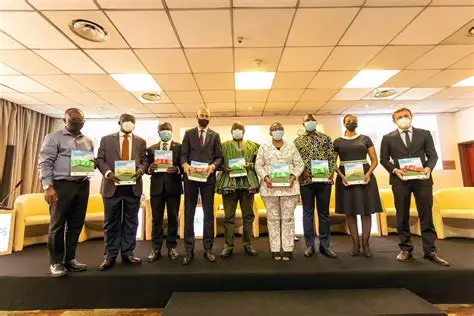President John Dramani Mahama on Wednesday officially launched the Ghana Infrastructure Plan (GIP) a comprehensive, long-term national framework designed to fast-track development, close regional disparities, and promote inclusive growth across the country.
The launch event, held at the College of Physicians and Surgeons in Accra, introduced what the President described as a “one-state planning model” a unified approach to ensure that every region benefits equitably from Ghana’s development agenda.
“This new approach aligns our infrastructure development with our government’s Big Push agenda, the African Union’s Agenda 2063, and the United Nations Sustainable Development Goals,” President Mahama said.
He emphasized that the GIP, themed “The GIP: Foundation of Ghana’s Long-Term National Development,” will serve as a cornerstone for Ghana’s transformation into a modern, equitable, and high-income nation by 2057.
Correcting Development Imbalance
Highlighting long-standing inequalities in infrastructure investment, the President called for urgent measures to redirect economic activity beyond the capital.
“Every industry is in Accra, and all foreign direct investment is coming into Accra,” he noted. “The incentives given to rebalance development have not been very effective. That’s why we are proposing an agricultural pact for the northern part of the country to redirect investors, create jobs, and open up opportunities for young people where they live.”
Operationalizing Ghana’s Infrastructure Agenda
President Mahama explained that the GIP operationalizes government’s infrastructure agenda, driving high-impact projects and completing delayed or abandoned works in accordance with Article 35(7) of the 1992 Constitution.
He also announced plans to revitalize the Government Infrastructure Investment Fund, ensuring sustainable financing for commercially viable infrastructure projects capable of generating thousands of new jobs.
“Today, we reaffirm this provision as the essential framework of national transformation,” the President declared. “I officially launch the Ghana Infrastructure Plan, not as a new idea, but as a renewed commitment to the promise of sustainable and inclusive development for all Ghanaians.”
A Roadmap for the Future
Developed by the National Development Planning Commission (NDPC), the Ghana Infrastructure Plan provides a coordinated 30-year roadmap (2018–2047) focusing on key sectors including energy, transport, water and sanitation, housing, ICT, and construction industry development.
First drafted in 2016 and finalized in 2019, the GIP forms the infrastructure pillar of Ghana’s Long-Term National Development Plan (2018–2057), which aims to propel the nation toward high-income status by 2057.
The initiative marks a defining step in Ghana’s long-term strategy to ensure that infrastructure development becomes not just a tool for growth, but a pathway toward equity, resilience, and national unity.


